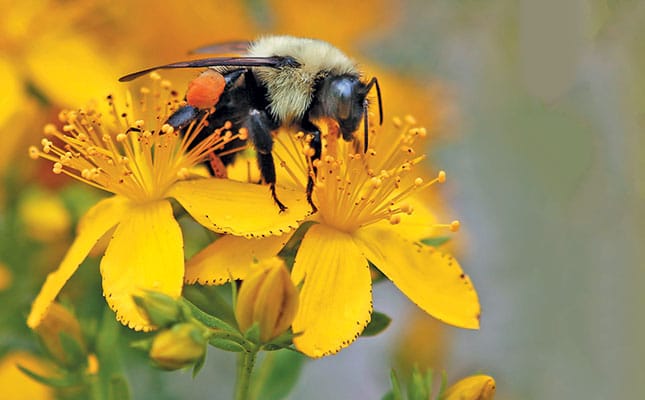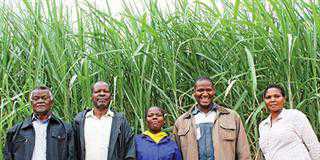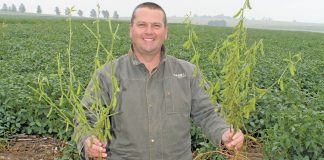
For the first time ever, bees have been added to the list of endangered species in the US, with seven species of the Hawaiian yellow-faced bee now officially considered endangered.
However, there has been continued debate amongst scientists over the reasons for the steady decline in global bee populations over the past several years.
Current theories
Dr Christian Maus, global lead scientist and bee care and pollinator safety manager at Bayer Crop Science in Germany, says that there are numerous misconceptions about bees and their conservation status, as many people do not know the difference between honey bees and wild bees.
READ The key to successful honeybee farming
Most honey bees, Apis mellifera, are kept by beekeepers and make large volumes of honey, whereas wild bees exist only in the wild and make very little honey, which is for their own consumption.
Maus spoke to Farmer’s Weekly about some of these misconceptions.
Honey bee populations are declining
According to a paper published in the International Journal for Parasitology by the United Nations’ Food and Agriculture Organization (FAO), honey bee populations are decreasing.
“Currently, both managed and wild pollinators are suffering alarming declines in many parts of the world,” the paper states. Maus says that this assertion is inaccurate; honey bee numbers are “clearly rising” and not declining. “Honey bees are not endangered and not on a list of endangered species.”
He agrees, however, that wild bee populations are decreasing, and argues that the greatest threat to these populations is habitat loss, as most wild bee species rely on specific habitat structures, as well as plants and nesting sites, which are declining as a result of modern agriculture.
Pesticides are a great threat
Maus says that many people think pesticides are largely responsible for declining bee populations, but he rebuts this theory. “According to all the data we’ve seen, pesticides play a minor role in this respect,” he says.
However, he warns that pesticide risks could increase if formulations are “incorrectly or indiscriminately” applied.
Without bee pollinators, there would be food shortages
Maus explains that as only 5% to 8% of global agricultural production depends on pollination by bees and other insects, the loss of bee pollinators would not result in food shortages. “Many crops do not need insect pollination as they are wind-or self-pollinated.”
Crops such as maize, rice and potatoes do not require the assistance of pollinators, while other crops can be pollinated by other pollinators, including flies and butterflies. Humans can also hand-pollinate crops that are grown in regions where natural pollinators do not occur, he says.
However, contrary to Maus’s assertion, the US-based Xerces Society for Invertebrate Conservation says that bees and other pollinators assist in the reproduction of almost 70% of all flowering plants, while fruit and seeds from insect-pollinated plants account for more than 40% of all food and beverages consumed.
Moreover, fruit and seeds derived from insect pollination are a major part of the diet of about 25% of all birds and of mammals.
Are pesticides to blame?
The US initiative to protect endangered bee species has become a talking point worldwide. In South Africa, bees have not yet been afforded similar protection.
Stephan du Toit, beekeeper and CEO of Du Toit Honey Farms near Vredefort in the Free State, says that South Africa needs to improve the protection of its bees.
Du Toit says that improved communication between farmers, beekeepers and crop protection companies could help strengthen bee populations.
READ Biological pest control basics
“What often happens is that beekeepers talk to the farmer where hives are stationed about their spraying programmes, but not to other neighbouring farmers. You have to find out about the spraying programme of neighbouring farms too,” he says.
Internationally, studies have linked certain pesticides with declining bee populations. According to a study published in the international weekly journal of science, Nature, a decrease in many populations of wild bees across the UK over the past nine years coincided with the use of chemicals known as neonicotinoids.
In the paper, ecologist Nick Isaac from the Centre for Ecology and Hydrology in the UK, writes that the study’s results proves that neonicotinoids are harmful to wild bees.
Monocropping: A threat bee’s to health
Lezanne van Zyl, a small-scale beekeeper and honey producer, says that monocropping is a risk to the health of bee populations.
“Putting a beehive into a land of canola would be similar to a person eating only bread,” he says.
Bees need a variety of food sources to strengthen their immune systems, which is why many beekeepers in the Western Cape station their hives in fynbos areas.
According to Van Zyl, farmers in the Western Cape’s wine production regions could plant cover crops such as clover in their vineyards.
This would provide bees with a nutritious food source, particularly in winter, and enhance vineyard nutrition. Farmers should also consider companion planting to reduce monocropping.
Commercialisation
Another paper published in the International Journal for Parasitology says that the increasing demand for food and intensive agriculture has resulted in a growing demand for pollination services, placing additional pressure on wild bees.
Many wild bee populations currently suffer from reduced genetic diversity, and, as a result, face increased vulnerability to infectious diseases and other stressors such as pesticides and reduced resources.
Saving the bees
Maus says that research into the causes of colony mortalities in honey bees is underway, while improved hive management and beekeeper education is being implemented in some countries.
He encourages farmers to collaborate with beekeepers.
“It’s important to communicate about application timing, particularly when insecticides are being applied. Moreover, use all products strictly according to the label. Where possible, avoid application of insecticides during flowering and bee flight.”
He adds that farmers should maintain natural vegetation and encourage the flowering of wild plants near crop lands.
If there is a shortage of flowering plants in the region, farmers should sow seeds to provide additional foraging options for pollinators.
Du Toit says that preventing parasites such as American foulbrood (AFB) within rearing facilities is essential as this highly destructive disease is easily spread through the use of contaminated equipment, the beekeeper’s hands or hive tools.
AFB can also spread through infected imported honey.
Du Toit says specific legislation, which would require and regulate the testing of imported honey and honey products, should be introduced.
“There’s just not enough action in terms of monitoring AFB. It spreads so easily,” he says.
Phone Stephan du Toit on 083 540 7375.













